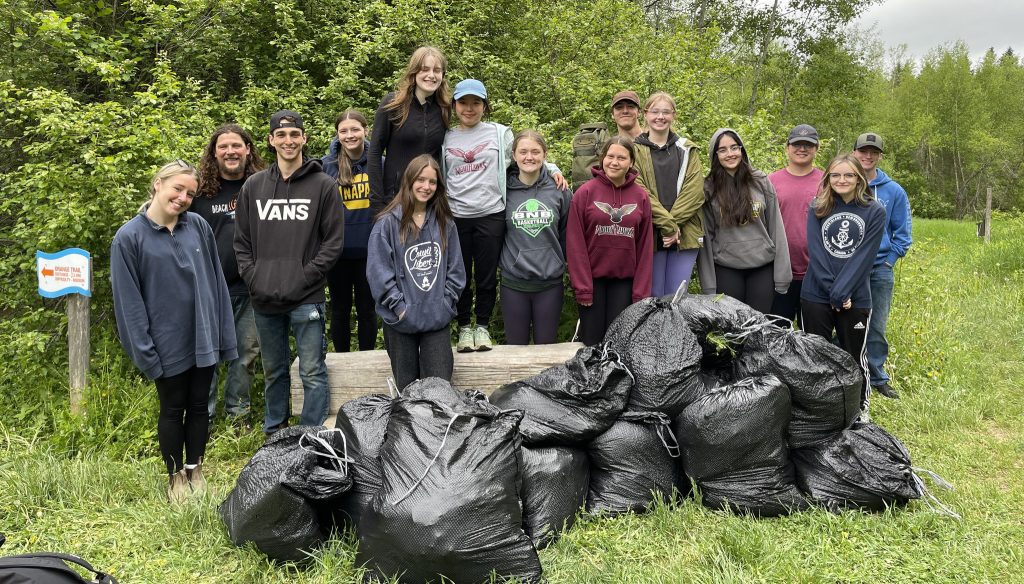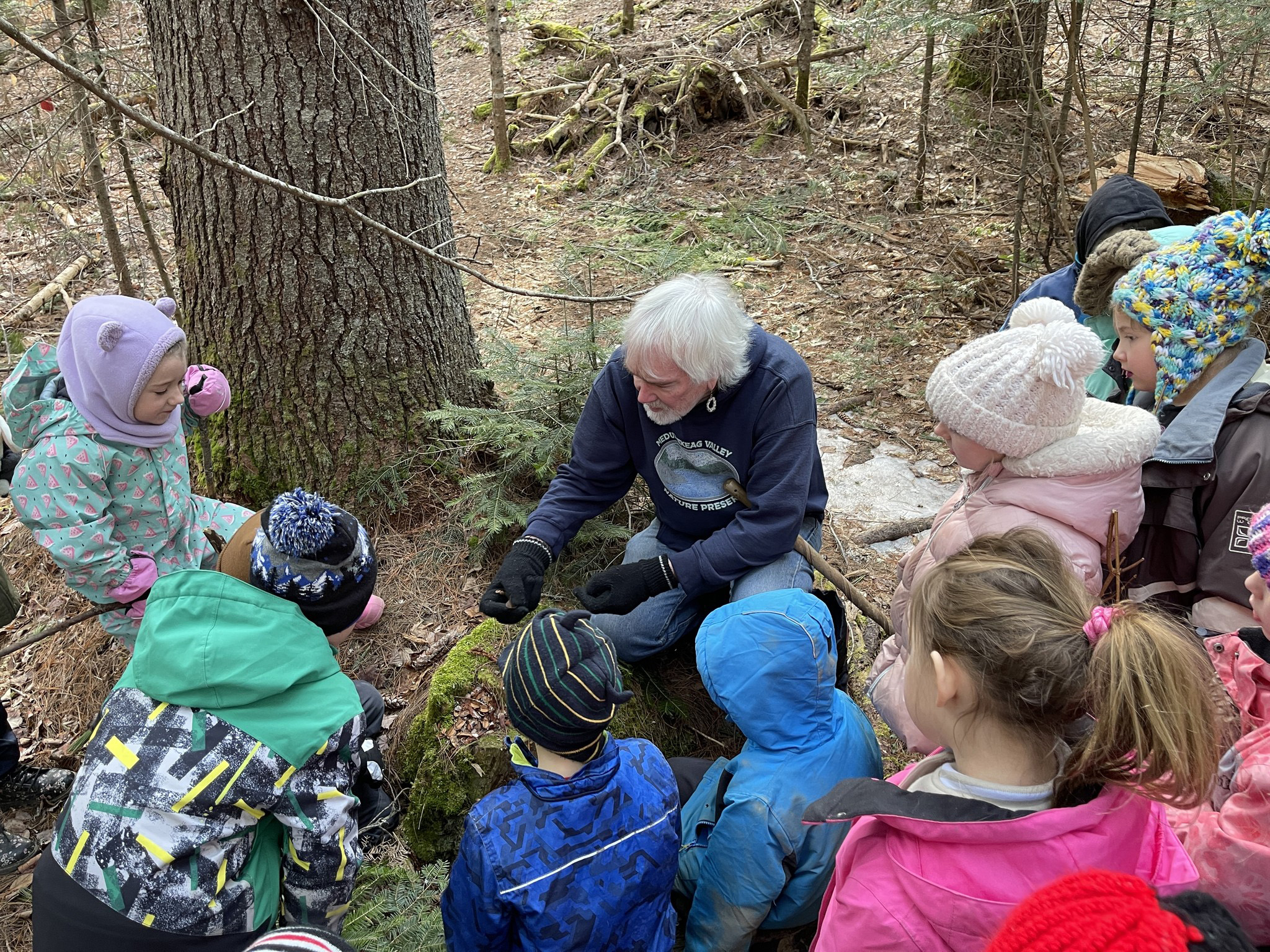
When teachers in the district’s upriver schools want to add a hands-on component to their lessons, they run to the river—the Meduxnekeag River Association (MRA), that is.
The MRA, based at the Meduxnekeag Valley Nature Preserve, provides outdoor educational opportunities for schools, community groups, post-secondary institutions, and the public.
And ASD-W’s collaboration with the organization—now entering its 25th year—continues to allow students to get their hands dirty, so to speak, in the pursuit of knowledge.
“Seeing nature close up is more meaningful than reading about it in a book or watching a video,” said Greg Reardon, a Grade 6 teacher at Woodstock’s Townsview School. Students bring these experiences back “to school and inspire ideas for discussion and inquiry across the curriculum – whether writing a nature journal or poem for English, measuring a tree to calculate its age for math, or fueling debate about environmental sustainability in our science classes.”
Serving the curriculum
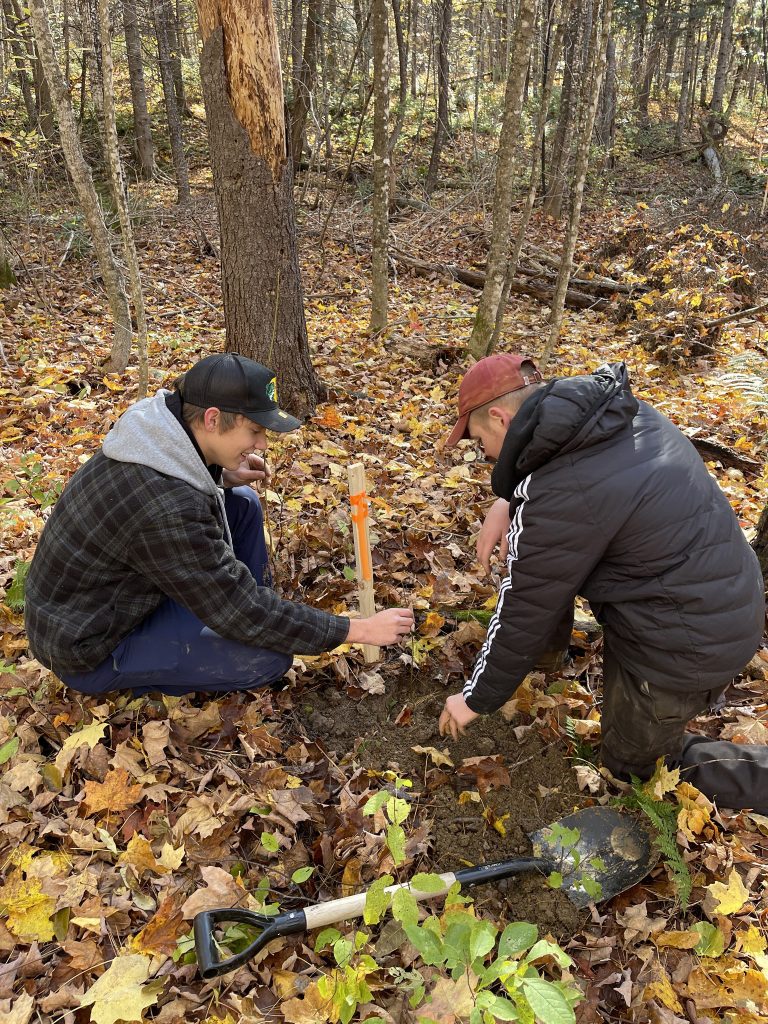
“Most of the classes come from [an area between] Nackawic to Bath, but we have had classes from as far away as Oromocto and Grand Falls,” said MRA Administrator George Peabody.
Student outings are no mere jaunts in the woods, however. Each is tied to curriculum in various subjects and geared to students in elementary, middle, and high school. Said Peabody, “We’ve researched it beforehand to see if there are particular things in the curriculum that we can link to, and if there are, we do, depending on the season.”
September and the warmer spring months might see students identifying different plants as part of a science class. “Kindergarten kids are really tactile, so they like to touch,” he said. “We show them things that they can touch and see what they feel like, like haircap moss, which is a really soft, bright green, low-growing Moss.”
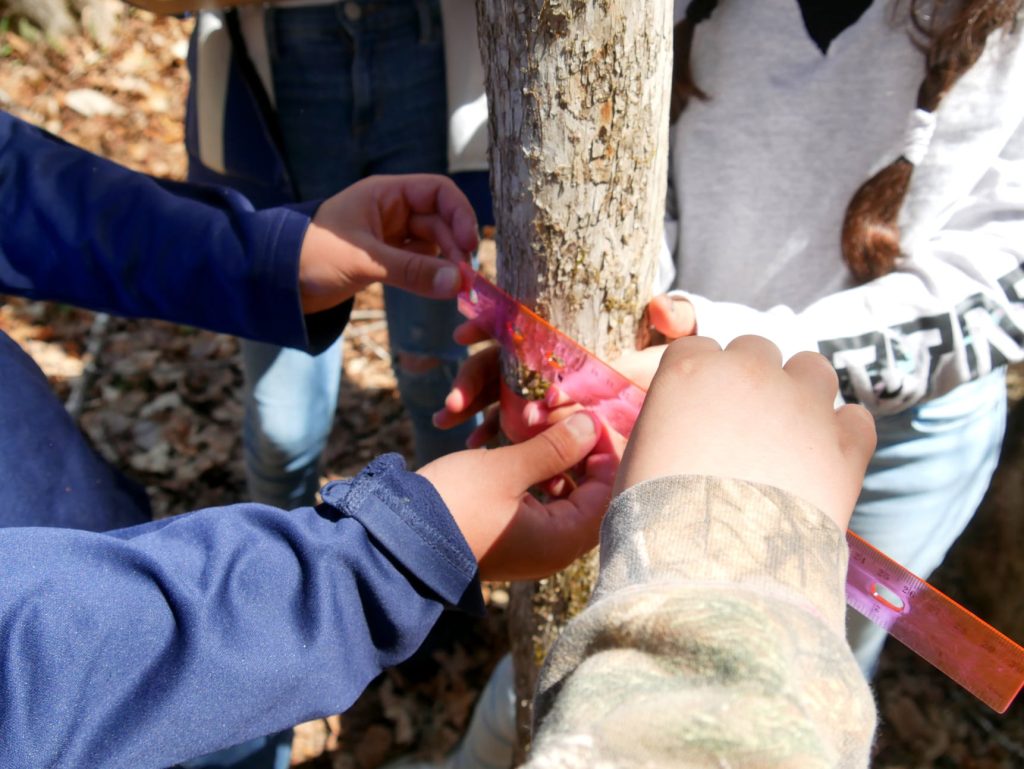
“There’s something called orange jelly fungus, which is actually an edible bright orange fungus they can touch to see why it’s called that. It has a sort of jelly consistency to it. You can eat it, but we don’t,” said Peabody.
There is, however, one exception to the no-eating-the-plants rule: “Wood sorrel is a little low-growing edible that looks sort of like a shamrock plant. We allow them to pick one leaf of that just to taste it. It has a sort of a green apple flavour. It’s really quite tart, but an interesting flavor all the same,” he said.
“Most of the classes come from [an area between] Nackawic to Bath, but we have had classes from as far away as Oromocto and Grand Falls.”
MRA Administrator George Peabody
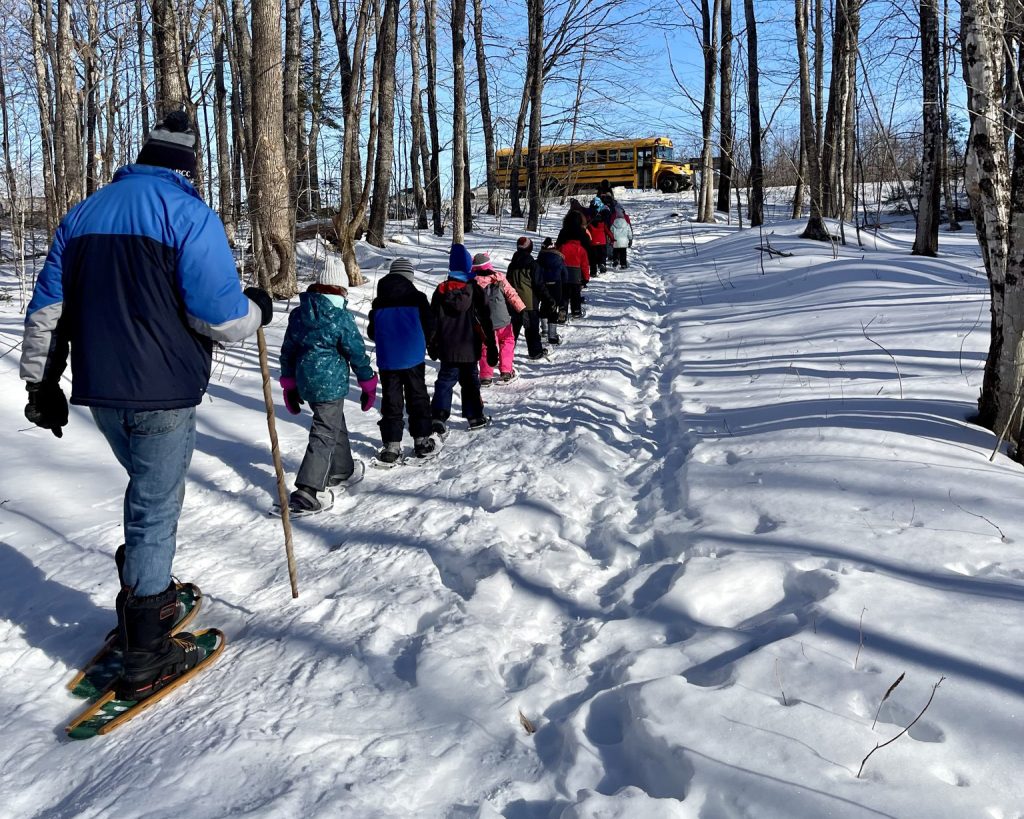
Autumn and winter may find students investigating animal habitats.
“Right now, as we’re changing seasons and going into winter, we’ve been talking a bit about how the animals are preparing for winter,” said MRA Outreach & Marketing Coordinator Holly Melanson. “We talk about which animals hibernate, and which do not. We talk about the migration of birds. We actually stop and listen to the forest. I ask them, ‘Did we hear any birds? And if we didn’t, why didn’t we? Where are they?’ We even look at potential hibernation sites.”
Middle and high school students get more complex tasks, owing to the more complex nature of their curriculum.
“We divide the class into small groups of five and… send them out with different instruments that they can use to measure the diameter of the tree,” Peabody said. “We also show them how to roughly estimate the height of a tree using their classmates. A student—‘Jerry’— stands up against the tree. You step back as far as you can get and estimate how many Jerrys it takes to get to the top of the tree. Then you can figure out roughly the height of the tree” because Jerry’s height is known.
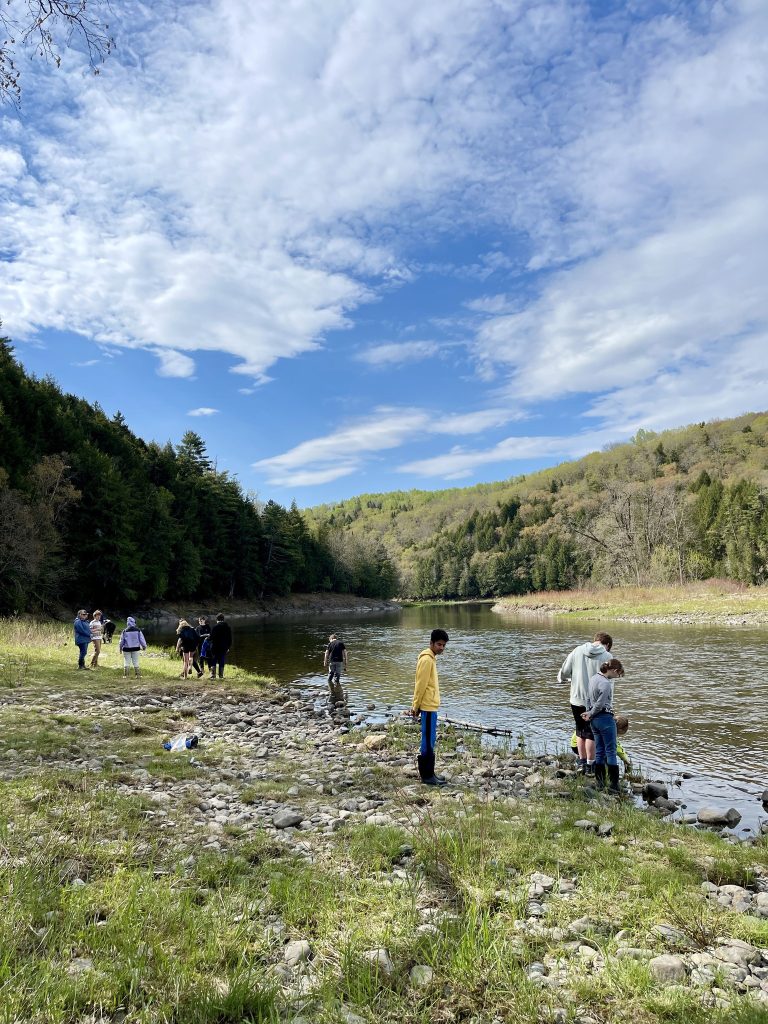
Grade 7 students participated in a soil workshop, determining its consistency, temperature, and pH. And Grade 8 students worked on water-quality activities. “We assign them an area and let them make a series of measurements there that will show stream flow dynamics, turbidity, temperature, pH, and then we talk about the importance of water quality,” Melanson said.
Students continue water-quality testing at the high school level, as well. And last school year, high school students took part in an environmental volunteerism activity that involved identifying and removing invasive species in the forest. “Garlic mustard. It’s our most problematic plant. It’s outcompeting our native plants and it’s very abundant,” she said.
“The class harvested 17 large garbage bags of this plant and carried it out from the trails. Then we discussed how to dispose of it,” said Melanson. “It was a really good half-day workshop.”
Reception
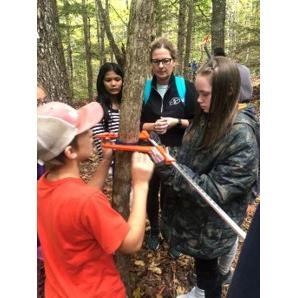
Greg Reardon’s Townsview School Grade 6 students really took to outdoor learning.
“I really enjoyed using the tools to measure the trees and then doing the calculations to figure out how old the tree is without cutting it down,” said Grade 6 student Odyssey Bedal.
Bedal’s classmate, Aubree Schriver, was inspired by the new classroom: “My favorite part of learning at the Meduxnekeag River Preserve comes from being outside the school to learn.”
MRA-ASD-W
Collaboration Fast Facts
All school age children (K- Grade 12) from Oromocto to Grand Falls are invited to participate in our programs.
Key Educational Offerings:
Elementary (Grades K-5): One-hour, curriculum-linked guided nature tours aimed at introducing young learners to the local environment.
Middle School (Grade 6-8): Two-hour hands-on workshops, including water quality monitoring, soil monitoring and tree measurement.
High School: various workshops, such as the study of aquatic invasive species and a new 2024 collaboration with a Forestry 110 course. This collaboration included an Appalachian Hardwood Forest/Butternut tree planting workshop which combining land education with hands-on planting.
To complement these programs, the MRA provides teachers with follow up materials to reinforce learning and collects feedback through post-visit surveys to continuously improve its offerings.
In 2024, the MRA also launched an Environmental Volunteerism Program, starting with a group of students from Nackawic High School who participated in an invasive species removal event. This program instructed students about the harmful effect of invasive plants, specifically garlic mustard, and allowed them to contribute by removing 17 large bags of this troublesome species from the preserve.
In the 2023-2024 school year, the MRA had the privilege of hosting 138 classes and engaging with 2531 students for guided tours and workshops at the MVNP. Looking ahead, the MRA is committed to building on this momentum and reaching even more students during the 2024-2025 school year. To achieve this, the MRA plans to stay in close communication with both returning teachers and new educators, ensuring they are aware of the wide variety of outdoor educational opportunities available. Regular email updates and outreach will be a key strategy to keep teachers informed and engaged, with the goal of getting as many students as possible to experience the unique and hands-on learning opportunities the preserve has to offer.
This school year we are focusing on encouraging classes to visit throughout all seasons. We believe that this multi-seasonal approach will enrich their learning experience by allowing them to experience the seasonal changes in the ecosystem firsthand. One exciting opportunity we offer is snowshoeing, which provides a unique winter experience and allows students to interact with the natural work in a completely different way. – MRA Outreach & Marketing Coordinator Holly Melanson
